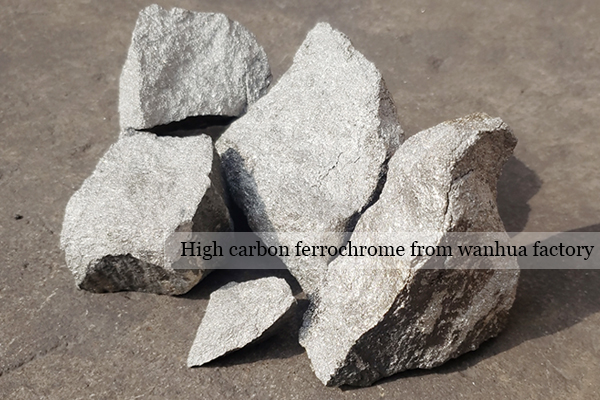how to learn about high carbon ferrochrome in a minute
Ferrochrome has high carbon ferrochrome and low carbon ferrochrome. It is mainly used in the production of stainless steel, ball bearing steel, tool steel, nitrided steel, heat-strength steel, quenched and tempered steel, carburized steel and hydrogen-resistant steel.
Ferro Chrome is the most important raw material for the production of stainless steel. There is only one element that determines the properties of stainless steel. This is chrome. So every stainless steel must contain a certain amount of chromium.

Product Name: High carbon ferrochrome
Natural attributes: natural blocks. Each piece must weigh no more than 15 kg.
Grade: High carbon ferrochrome with 50% chromium content as the benchmark unit. Carbon content>=4%
Note: material, particle size.
Application:
The corrosion resistance of stainless steel is mainly derived from chromium.
Experiments have shown that the corrosion resistance of steel is improved only when the chromium content exceeds 12%. So, the chromium content in stainless steel is generally not less than 12%.
Thus, the supply and demand situation of chromite is closely related to the supply and demand situation of the stainless steel market.
Smelting raw materials of high carbon ferrochrome
The raw materials for smelting high carbon ferrochrome are chrome ore, coke and silica.
Cr2O3 ≥ 40% in chromium ore, Cr2O3 / ∑FeO ≥ 2.5. S < 0.05%. P < 0.07%. The content of MgO and Al2O3 should not be too high. The particle size is 10 to 70 mm. In the case of refractory ore, the particle size should be suitably small.
Coke is required to contain not less than 84% of fixed carbon. Ash is less than 15%. S < 0.6%. Particle size 3 ~ 20mm.
Silica is required to contain SiO2 ≥ 97%. Al2O3 ≤ 1.0%. Good thermal stability, no soil. Particle size 20~80mm
Smelting process of high carbon ferrochrome
The smelting methods of high carbon ferrochrome include a blast furnace method, an electric furnace method, and a plasma furnace method. Only blast furnaces can be used to produce special pig iron with about 30% chromium.
As of 2012, high-carbon ferrochrome with high chromium content was mostly smelted in a submerged arc furnace using a flux method.
The basic principle of electric furnace smelting of high carbon ferrochrome is to reduce chromium and iron oxides in chrome ore with carbon.
The starting temperature of carbon-reduced chromium oxide to form Cr2C2 is 1373K.
The reaction starting temperature at which Cr7C3 was formed was 1,403 K.
The reaction starting temperature for reduction to form chromium is 1523K.
Thus, in the case of carbon reduction of chromium ore, a chromium carbide is obtained.
The amount of carbon in the ferrochrome depends on the reaction temperature. It is easier to produce carbides with a higher carbon content than to produce carbides with a lower carbon content.
How to sample high carbon ferrochrome during testing and analysis?
1. Large pile verification sampling:
When the batch is less than 10 tons, no less than 10 samples should be taken randomly from different parts;
When the batch is more than 10 tons and less than 30 tons, no less than 20 samples should be taken randomly from different parts;
When the batch size is more than 30 tons, no less than 30 samples should be taken randomly from different parts.
Note: The weight of each sample should be approximately equal, and the blockiness should be no less than 20*20mm. The total sample size should be no less than 0.03% of the batch.
After sampling, all samples taken should be broken to less than 10 mm. Then use the quartering method to reduce to 1-2kg. Mix and divide into two equal parts. One sample is used for analysis and one sample is reserved.
2. Packaging verification sampling
Each batch should be randomly selected with no less than 10% of the package.
A sample of approximately equal weight is randomly taken from each piece. The blockiness is not less than 20*20mm. The sample size must be no less than 8 and a maximum of 30.
All samples should be broken to less than 10mm. Use the quartering method to reduce to 1-2kg. After mixing, divide into two equal parts, one sample for analysis and one for retention.
